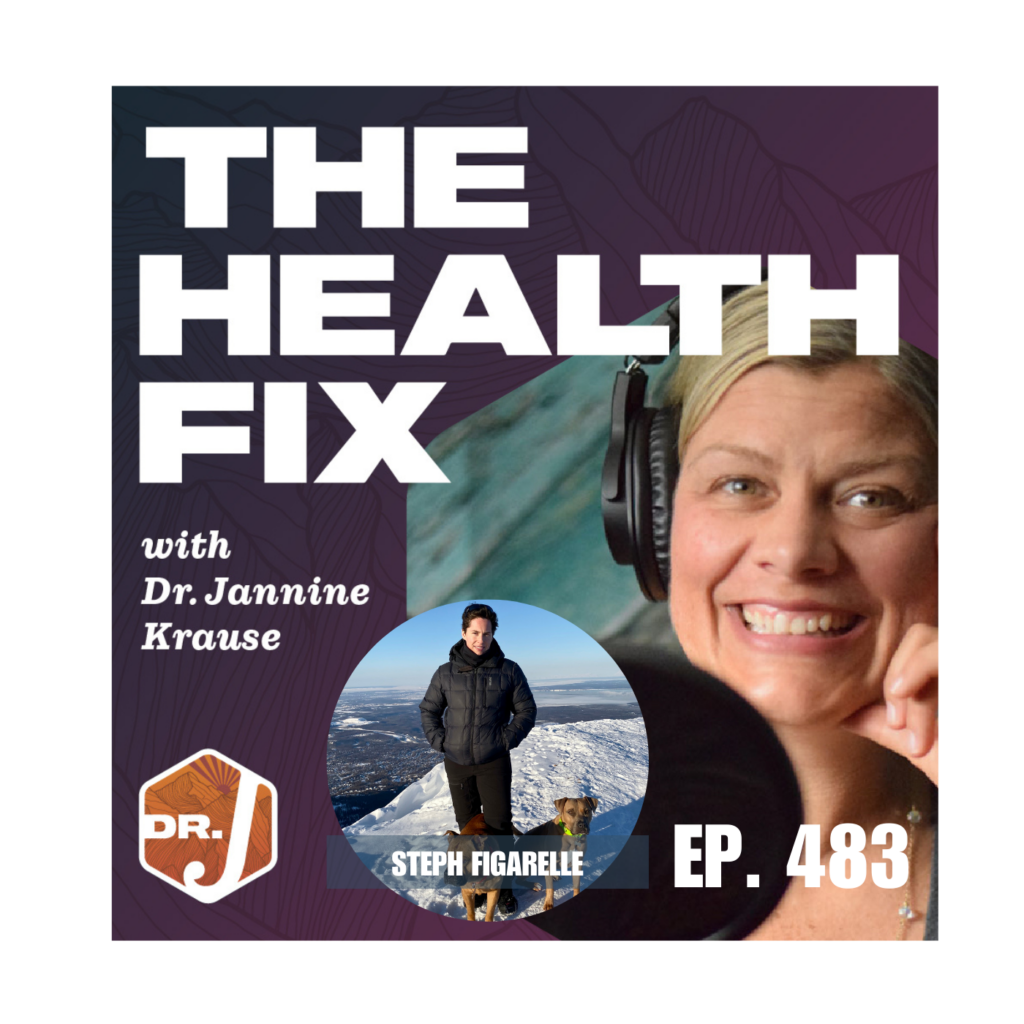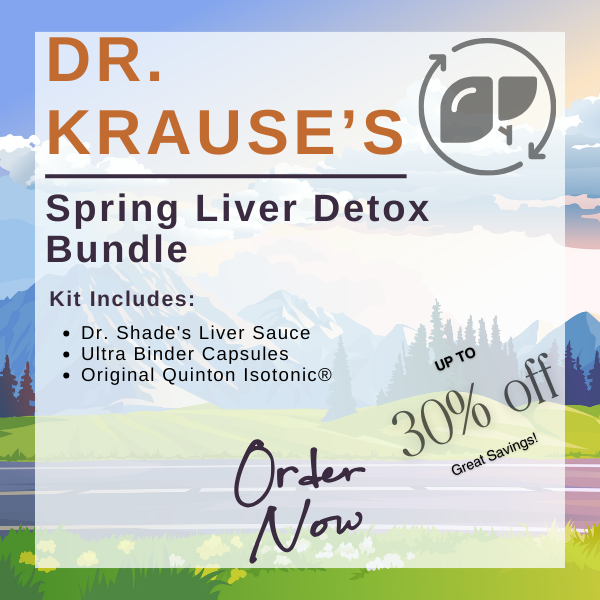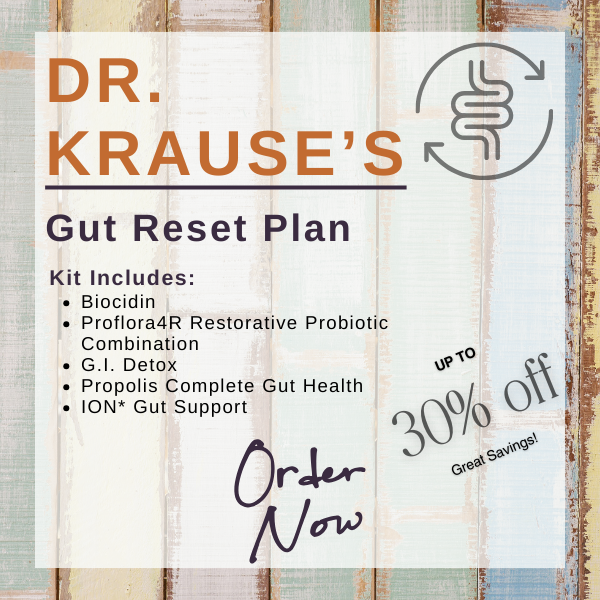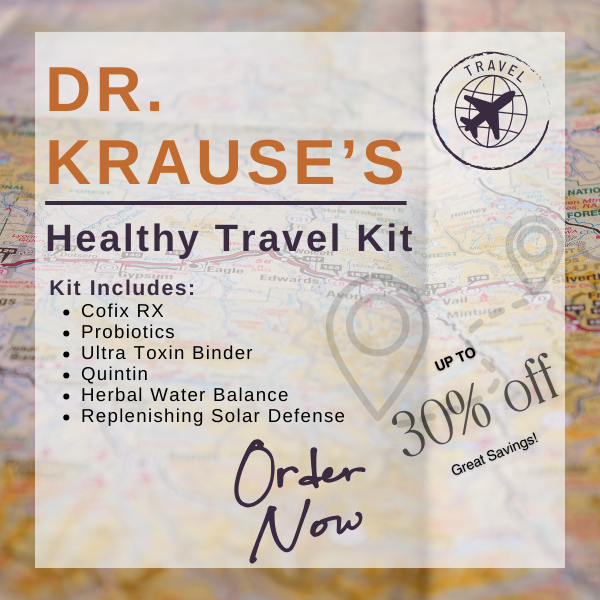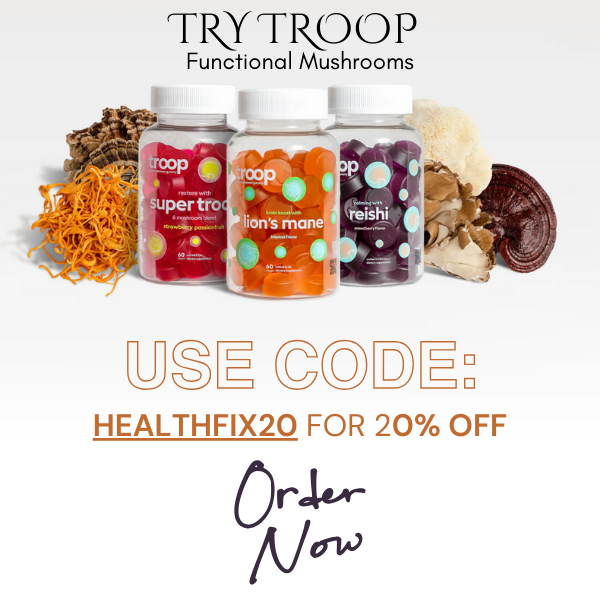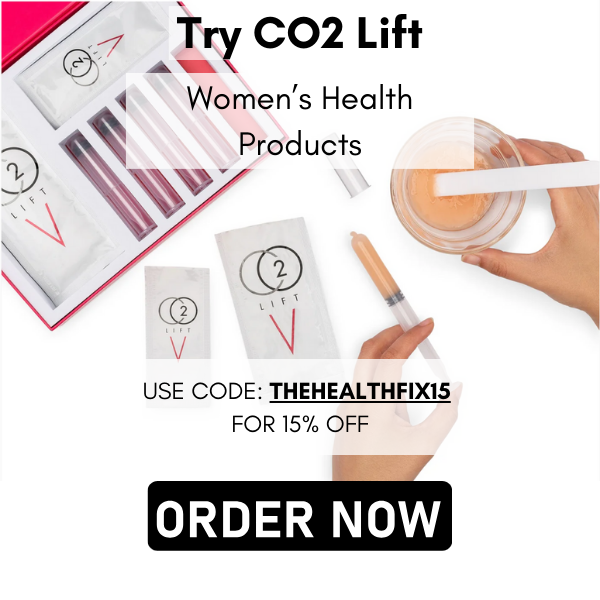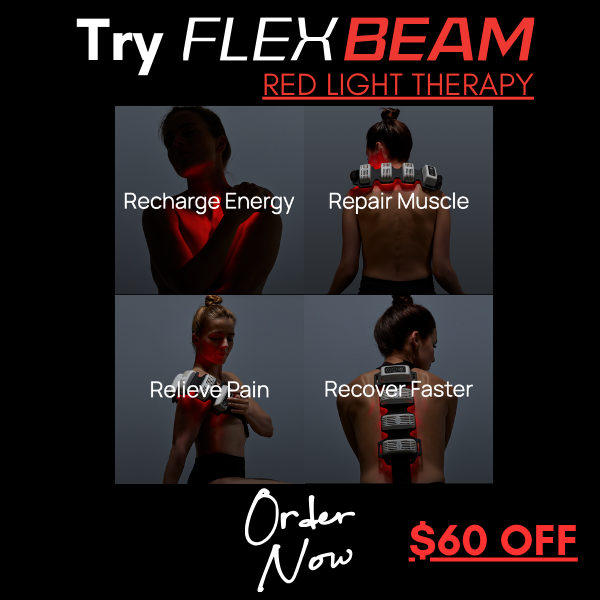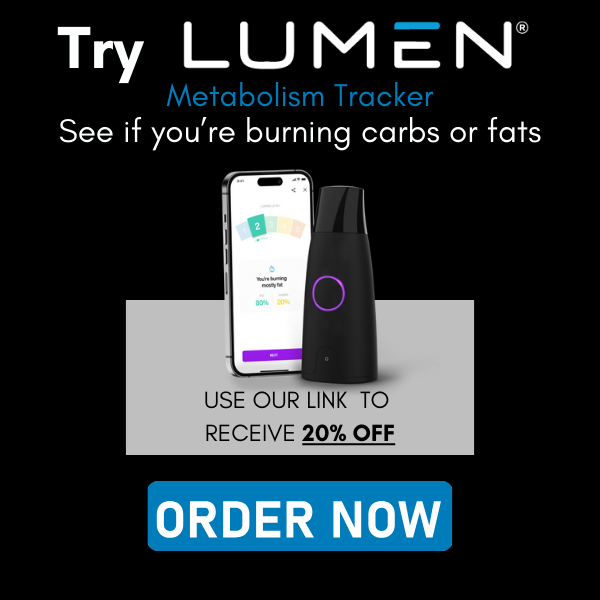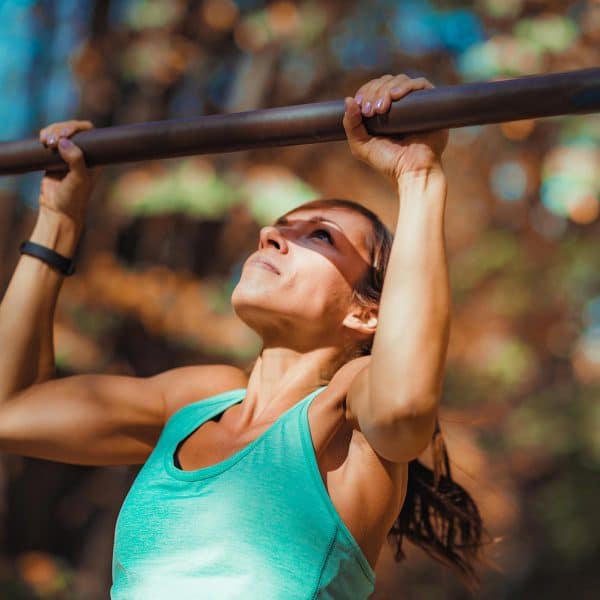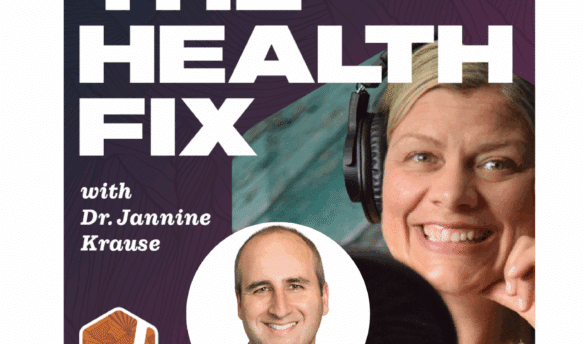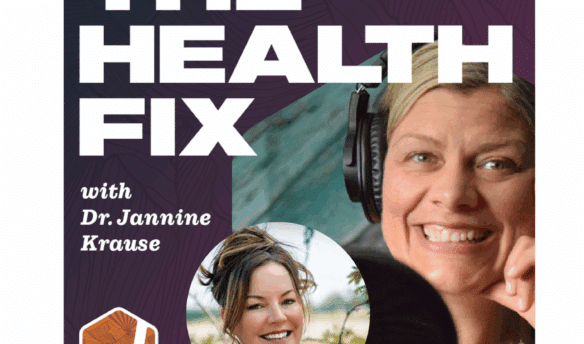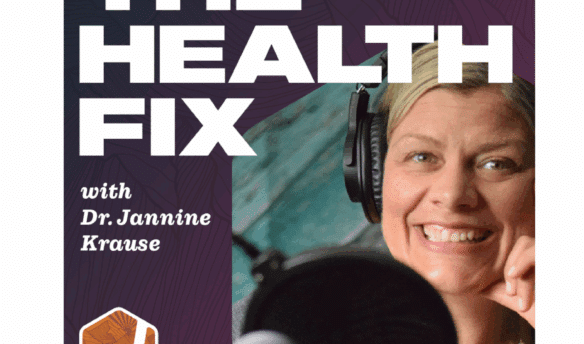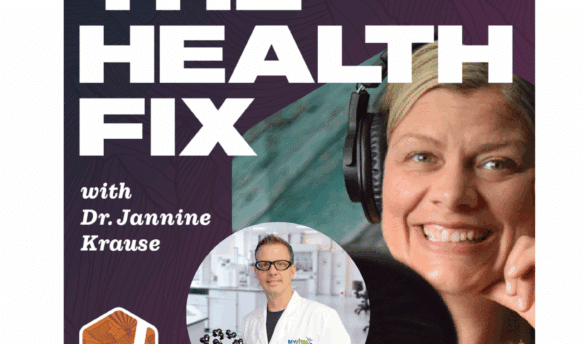Curious what it takes to hike big mountains, lift weights, maintain a lean physique and defy what society terms “normal aging”? Steph Figarelle is the co-owner of Figarelle’s Fitness, host of the Fit Fig Podcast and is an avid hiker and runner who lives in Anchorage, Alaska. She loves helping people feel comfortable in the gym and in their bodies and she’s a master at helping people achieve their fitness as well as non-fitness goals too! Steph got into fitness with competitive bodybuilding in high school and fell in love with the realization that she could change her body with food and exercise. She’s all about educating on how it’s never too late to get into incredible shape and live the live you want. In this episode of The Health Fix Podcast, Dr. Jannine Krause interviews Steph Figarelle on the secrets to working out over 40, how to build muscle and what really works to change your body composition.
Dr. Krause’s Protocols
Instructions Included
Traveling soon? Looking to detox or reset your gut? Try one of Dr. Krause’s Fullscript plans.
What You’ll Learn In This Episode:
- Why sticking with a sleep schedule is crucial to have consistent energy
- What to look for in an Intra-workout carb drink to prevent sugar crashes when you don’t eat before workouts
- Steph’s insights into flexing macros based on your daily activity
- How tracking macros can give the best insight into body composition
- Why the style of eating doesn’t matter it’s what you can be consistent with that does
- The importance of setting a goal going into a workout plan
- Specific techniques to build muscle
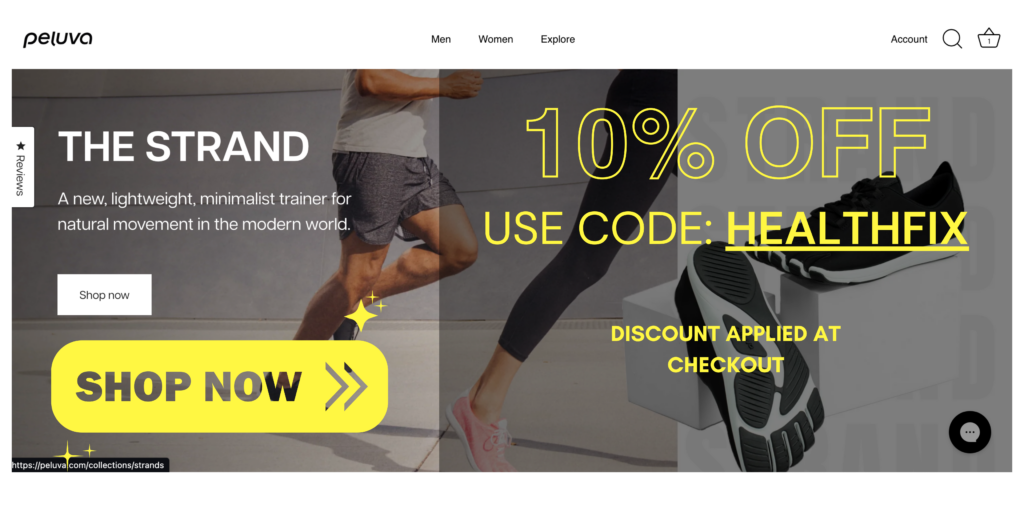
Resources From The Show:
- Figarelle’s Fitness
- The Fit Fig Podcast
- Granite Recovery Drink Steph mentions in the podcast
Our Partners
Podcast Transcript
2:31 – Steph’s backstory
13:42 – Navigating fatigue – “Guard your sleep”
16:42 – Drinking an intra workout carb drink while you train
19:56 – Sugar during workouts
21:27 – Skipping meals and blood sugar balance / intermittent fasting
25:51 – Steph’s current habits around eating and lifestyle / Macros
38:17 – Steph’s workouts
41:40 – What type of workout programs do you do with your clients?
46:43 – Intensity
48:48 – Mindfulness meditation
53:31 – Training folks for hiking
59:08 – Where to find Steph online
[Intro] Welcome to the Health Fix Podcast where health junkies get their weekly
fix of tips, tools and techniques to have limitless energy, sharp minds and fit
physics for life. Hey, HealthJunkies, on this episode of The Health Fix Podcast, I’m
interviewing Steph Figarelle. She’s a palamine and we met through a
coaches group a while back and how to do a podcast one day, so here we are.
Steph is the co-owner of Figarelle’s Fitness. She’s a podcast host of the
fit fig and she’s an avid hiker and runner who lives in Anchorage, Alaska.
Steph loves helping people feel comfortable in the gym and in their bodies and she’s
a master at helping people achieve their fitness goals and their non-fun fitness goals too.
Now Steph got into fitness with competitive bodybuilding in high school and fell in love
with the realization that she could change her body with food and exercise size.
all about educating and how it’s never too late to get into incredible shape and live the life
you want. Now I know Steph’s Instagram posts make me want to get an outdoor shape and explore
the epic places she’s adventuring. That’s for sure. Steph’s currently working on a goal of
finishing a 100 mile ultra marathon. Now that’s impressive. Steph drops a lot of nuggets from her
extensive experience that you don’t want to miss. So let’s introduce you to Steph Fagurelli.
Hey, Steph, welcome to The Health Fix Podcast.
STEPH: Thank you for having me.
Man, I’m so excited to talk to you.
It’s been like, I don’t know, maybe three years since we talked about doing this first
and now I’m like, finally, the day is here.
So thank you.
I appreciate it.
STEPH: I appreciate you.
Hey, so like, you know, we’re both over 40 and a lot of people are kind of going, you
know, asking me like, okay, Doc, I know you work out, I know you left.
What do you do?
You know, I don’t know if I can do what you’re doing, but is it even worth it for women
over 40 because we’ve got this whole thing of people saying just walk, don’t lift.
Then there’s all the folks with their like hit and then some lifting and then their circuit
training.
I mean, you name it, you know as well as I do, there’s a bajillion things out there.
So of course, you are kind of my go to when I went folks are like, well, can I really build
muscle over 40?
I’m like, hey, look at this website.
You go look at stuff.
She’s got amazing muscles going on there.
So tell us a little bit about your journey because you were telling me you started noticing
things changing a little bit in your 30s. And then now you’re like, okay, I got to tweak things a little bit.
Give us a little scoop on on your story. So, women can maybe resonate a little bit and see,
oh, that might sound like me.
STEPH: Yeah. So, when I was a kid, I was pretty active, but I wasn’t by any
means, you know, like the big jock in school. I was a swimmer, I played softball, I was on the track
team, but I didn’t ever feel like I was an athlete or that I was a particularly fit person.
I didn’t grow up hiking. I grew up in Alaska for the most part. And I just wasn’t really outdoorsy.
And so I didn’t have this identity attached to physical fitness in the way that I have it now.
And that I’m in every day, I’m surprised when I think back on that beginning and when I think
about where I am today, how interesting this whole journey has been. But I remember when I was
in junior high, my mom was dating a guy who was really into going to the gym. So I was about 13.
They would go to the gym and I would tag along every now and then. Now this was the 90s, like 93.
Big bodybuilders were becoming more and more popular. I remember flipping through a magazine
and I found out this gym and I saw this guys quads
and I couldn’t believe that it was even a human being.
I was like, it blew my mind.
I became almost like obsessed with seeing this super human,
you know, these bodies that just like unbelievable.
And I thought, wow, go into the gym, you know,
you can build a body like this by just exercising.
Like that’s crazy.
Now I didn’t know a whole lot about steroids and things.
And so that was later when I finally figured out like, okay,
most of these people are probably using some sort of assistance to get to this level of
muscularity.
But overall the idea was or the fascination was around changing your body with fitness and food.
And so I was just obsessed.
I mean, I all through high school even a little bit.
I always kind of entertained lifting weights and getting fit.
So I eventually started to take it seriously when I was a senior in high school.
We have a local bodybuilding competition at all the high schools.
It’s at the end of the year.
And all the high schools will come together and compete against each other too.
So one, you know, each high school has their show and then there,
there’s another show where then all the winners can come together and compete against all the other high schools.
So I ended up competing in and winning my high school bodybuilding competition.
So this was old school, just basic flexing, you know, all the things on stage in a bikini,
way out of my comfort zone. And I just fell in love with it. It was like the biggest
high I could have ever imagined. And I was 18, I graduated high school shortly thereafter.
And I thought, I got to figure out a way to make money doing this because I love it. And I
want to do it forever. But I also have to find, I also want to teach people that you have control,
you have the power, you can change your body by just getting up and going to the gym and doing
a specific sequence of things the right way consistently over time and then eating correctly, of course.
And I was fascinated by the psychology behind that and I wanted people to feel what I felt.
And after high school I did the exact opposite of that. I got into partying and just kind of hard
core, not healthy at all. But I always felt this pull to go back to it. I ended up getting
a job at GNC, General Nutrition Center, out of the pit still around everywhere. We still
have a couple of here. I became a manager there. And so I was always linked to fitness,
health, supplements, bodybuilding in some way. So I always had that kind of like foundation.
And it wasn’t through sports. It was always bodybuilding and lifting weights and just learning
that whole process. So I competed from 2000 to 2009 and I semi-retired, I always say semi-retired
because I don’t know, maybe I’ll go back one day. But having competed since 2009 and
shortly thereafter got actually into running. And so that was the opposite also of what I would
have in bodybuilding because it can be very catabolic. It’s very hard on the body in a lot of
different ways and I just fell in love with that. So I kept bodybuilding but I
introduced now hiking and running and eventually ultra running and I started
to notice some things in the we’ll say like the offseason in Alaska the off
season would be probably a October to to a May we’ll say which is a long
period of time to where you’re not really spending as much time outside and and a
a lot of people here do.
They ski, they do a lot of things outside.
And I just haven’t, I’m not a huge skier.
Like I’ll snowboard.
But so in my, probably like 37, 38, so I’m 42 now.
I started to notice some things with unusual fatigue
and not being able to get away with eating food
that I normally could eat before fun foods.
It cakes cookies and ice cream.
I thought, oh, maybe it’s because I’m not,
it’s the off season.
not as active right now. And there’s a correlation there, of course. But I noticed fat distribution
was a little bit different. I noticed cellulite in new places. And it wasn’t like I was, I was like,
you know, negatively, feeling negatively about it necessarily. It was just that it was like,
oh, that’s interesting. It’s new. Because once I discovered bodybuilding and
had built all these really great habits, it’s almost like, you know, your habits will pull you
in that direction, you don’t really have to work hard to follow those habits.
They’re just, it’s like a gravitational pull toward the things that you’re most,
you’ve been doing most often, and that could be good or bad.
And so I just, I realized like things are changing a little bit here in a way that
I don’t feel quite as, I also noticed this level of intensity was starting,
because I’ve always been a pretty intense, aggressive person gravitating toward
bodybuilding or, you know, kind of like just being really active, you know, running and doing all this like,
kind of what I thought were like intense crazy things. And I noticed my my drive for that was
declining a little bit, almost like I felt not quite as like intense. I don’t know how to explain it.
I thought, oh, things are kind of changing here a little bit. And I didn’t really, you know,
I didn’t do anything about it necessarily. If anything, I kind of just went with the flow of the change.
I kept up with my lifting, I always have.
So yeah, that’s kind of where I noticed some things changing. It was about five, six years ago.
And if I really think back and look through journals, because I journal, I’ve journaled for
all my workouts for, I mean, 12, 13 years, pretty consistently. So I have stacks of notebooks where I
could look through and go, oh, maybe there were correlations and, you know, maybe there was a decline in
in my consistency. Maybe I was doing something. I haven’t really ever picked through and looked at that
closely. So there could be something to that as well. But it–
JANNINE: I mean, it’s interesting, right? When
when you have journaled myself included, like I have these, like stacks of the old school notebooks,
the app stuff, not my jam. You know, I like the old school too. And I look, you know, I have looked
back on myself, but I need like a series of like two weeks of rainy days where maybe I could justify
it. But I have seen like, yeah, it’s like all of a sudden, there’s like a decline in
in in the be able to the max wraps, right? And there’s like a little bit of where I have notes of
where I’m like, so tired today, not sure why. And it like increases over time. And it’s like,
I’m dragging. And then you try to connect to period and be like, is there something there? And
sometimes you’re like, I have no stinking clue. Have you noticed the same thing in your clients
as you’ve been working with folks as they get from like the late 30s and to the 40s and beyond.
STEPH: Yeah, it’s different for everyone. That’s something I have noticed is no two women are alike.
And some women haven’t really noticed much change through menopause, which is fascinating to me when,
you know, it depends on a lot of things too. If a woman’s had a partial hysterectomy, for example,
she has ovaries but no uterus, she doesn’t know when her menstrual cycle’s going to stop because
it’s been gone. And you know, or you know, it’s obviously it’s, it’s being removed. There’s no
period. So it’s like there aren’t these tell tell signs of change for some women and then other
women go through Manipaz fairly early way earlier than you would, you know, traditionally we’ve
been taught that you go, oh, you go through Manipaz around 50, 50, 52 or whatever. And some women
have had zero discussion with their own mothers or grandmothers for whatever reason.
And so they don’t really know what to expect. And it’s not to say that we’re going to be
exactly like our mothers or what our grandmothers went through, but there’s some
signs, sometimes that theme there with genetics and things. So there’s different conversations
I’ve had with different women around what it means. Some women can be very anxious. So I’m
always mindful when I discuss this with my female clients who are of the age of paramedic
pause where they’re really noticing the changes because some women can be very…
It’s a touchy subject and they’re not willing to really talk about it,
which can make it hard for you as the coach because it’s like, well,
I mean, this is checking all the boxes, anxiety, fatigue, difficulty sleeping, all kinds of
different things that are affecting your ability to recover, which will affect your ability to build
muscle and some women emotionally can’t go there. And so yet to be pretty careful with
the conversation, because not everybody is, I’m super open. There’s no TMI. I don’t do that.
My clients are welcome to talk about anything they want to discuss. We talk about bowel movements,
menstrual cycles, talk about everything. But some people don’t want to go there. And then,
you know, I back off and I let it go. But yeah, absolutely. There’s some women who go through
it’s rough and others don’t really notice it. So, man–
JANNINE: I hope as I move forward, I am one that
does not get the hot flashes and all that. Like I’m like, I do not want to notice it.
STEPH: Right.
JANNINE: My body, please, please, let’s be chill. Hopefully all this work I’ve put into now,
we’ll go forward. Help us to stir out here. Now, you know, for a lot of women, one of the things,
the fatigue is a big deal, right?
And regardless of whether there is some wonkiness
with hormones or whatnot, I get a lot of women
who will say they’re bonking in the middle of their workouts
or they’ll do a workout and that’s all they can do.
They go home and they’re like, out.
Do you have any suggestions or anything
you’ve seen around that and kind of how
to navigate the fatigue situation?
What do you guys do?
What do you do in your particular practice with folks?
STEPH: So personally, I am a big proponent.
My clients get so annoyed with me because it’s difficult for sleep as hard.
It’s even more difficult for moms or parents in general, but moms tend to be the ones who are having sleep disturbances the most.
And then if they’re in their mid 40s or in your parametripes and they’re experiencing maybe some disruptions due to hormonal fluctuation or whatever,
then that’s the added thing on top of it. Another stressor for us here in Alaska is now we are in our long daylight months.
And so its sun is coming up around 3.34 a.m. and it doesn’t set until I think like 11 or 12.
12. And so in the summer for like three months, people are really trying to spend as much
time outside as they possibly can. So that’s affecting their ability to go to bed early.
And then they’re tired in the morning, but we have that daylight at least to help us wake
up. So for me, I am very consistently going to bed and waking up at exactly the same time,
seven days per week. I do not have a television in my room. My phone is off and in another
room when I sleep. I have blackout curtains so no light gets in and I’ve actually started
sleeping with a sleep mask. I wear ear plugs. I live on a super busy street. So for people
who don’t have all these interruptions, they probably don’t need all these extra things,
I guard my sleep and I am very protective over that. Go to bed and wake up at the same time thing
and people think it’s weird. They’re just like that’s insane. But I have to do it to keep
that consistency because if you go to bed and wake up at a different time every day or you sleep
sleep in on the weekends you don’t feel better necessarily some people might but I always felt
more fatigued if I got sleep you know too much sleep on the weekends and then I’d start all over on
Monday or Sunday night or whatever trying to fix it so I decided seven days a week no matter where
I’m at sleep is the priority my dog is his own bed he’s not a lot on my bed I don’t want any
disturbance. So I’m eliminating all disturbances before bed. Anything that’s going to distract me.
And I start kind of winding down before. These are all suggestions I make and have made for many
years with all my clients. And they do their very best. So it’s one thing I don’t have children.
I don’t have a lot of distractions or things to manage. So I can’t be over here like, well, do this,
do that because I know I don’t feel like I have any place to say that with when with
not having kids. I have a very manageable lifestyle, but sleep is very important because if
you’re in a sleep deficit, it’s going to be difficult to get through a workout because
now you’re adding more stress. So one thing that has been a significant change for me is
drinking an intra workout, carb drink while I train.
So I found a really good one.
It’s a recovery drink from granite fitness.
And I’m a big John Meadows fan,
if anybody’s familiar with John Meadows,
he has, he’s passed away,
but he has a supplement line called granite fitness.
And I just was on a big John Meadows kick a couple of years ago
and I was buying all these supplements
and I just fell in love with this drink.
It’s primarily sugar, but I love the way I feel in the gym.
I’ve tried different things to try to get off of it.
I’m like, Ah, coconut water is just as good,
or whatever, something with carbs.
Because if I’m not drinking something like that during,
I don’t have a big breakfast before I try
and typically try at 6 a.m., so I’m not eating a ton of food.
So if somebody’s working out early,
or even later in the day, consider bringing with you
an intro workout shake.
something maybe with what this doesn’t have,
I don’t think any protein in it,
but something to where your blood sugar
isn’t going to crash because that’s made
all the difference for me.
So even if it’s a little bit of juice or whatever,
something to keep the blood sugar up,
because it keeps your intensity in the workout high.
If you start to fade 20 minutes in
and your blood sugar is dropping, your hungry,
your workout’s gonna suck and you’re not gonna be able
to push hard enough to build any muscle.
So sleep and that intro workout drink have been huge for me.
And then thankfully,
when after I workout, I’m energized.
So I haven’t noticed any sort of crashing
or fatigue after the workout.
In fact, it’s always the opposite.
I workout to get more energized.
And one benefit too that I’ve noticed
is I’m by the time I’m ready to sleep within about 30 minutes,
I’m exhausted on days I lift,
which allows me to fall asleep faster and stay asleep.
So that’s been awesome.
So I would suggest if somebody is having issues related
to fatigue, I mean definitely get, you know,
blood work and check on things, you know,
check under the hood, make sure everything is okay.
But then it’ll take a really honest look at your sleep
and see where you can regulate it a little bit,
maybe get some morning sunlight for a few minutes
and just kind of like get yourself wake yourself up.
And then experiment with something where you’re either eating something light before you
train or something within the worker.
You’re drinking something rather because your digestive system might be affected by food.
And that has made all the difference for me is just having that little blood sugar increase
while I’m training.
So–
JANNINE: That, I mean, makes perfect sense.
It makes perfect sense.
And you kind of got me into an idea.
I’m like, hmm, ’cause I’m one of those early worker outers.
I cannot eat before otherwise.
I have this like terrible fear of barfing.
I don’t know what it is.
I’m totally there.
But yeah, I have found some crashing a little bit
and I wonder if it is timing from dinner, you know,
going into the workout.
There’s just not, I’m out of gas.
I need more feeling.
Makes sense.
STEPH: Yeah, that’s right.
It’s been awesome.
And I mean, I push so much harder in that workout
when I have a little sugar.
My body responds very well to a little bit of sugar.
Not like I’m a, yeah,
over here eating bunch of candy and stuff,
but that could be a thing too.
People eat sour patch kids while they’re working out
just for the boost in blood sugar.
And I feel great when I drink that.
I’ve tried, like I said, I’ve tried quitting it.
It’s not a cheap product.
And I’m like, I’ve got to be other things.
I’ve tried even other recovery type drinks with carbs,
and I can’t find the same thing.
So it’s called recovery, granite fitness.
If you’re ever interested, it’s awesome.
And I love it.
So.
JANNINE: Hey, we heard it here.
We heard it here.
We’ll make sure we get that in the podcast notes, guys,
at doctorjkrausend.com, because that one, I’m definitely
going to try, because I am noticing a little of the fatigue
myself.
I have some clients that are kind of talking about it too
in terms of their workouts.
And it makes sense, right?
It makes sense.
If we had dinner at 5 o’clock the night before,
now we’re doing workouts, 12 hours later,
if we didn’t– if we burned through whatever
that dinner was, well, you know, or if we’re doing some, you know, we skipped dinner,
which is a whole nother thing.
I want to talk about food for a minute and talk about blood sugar in general because I
find, I mean, I also don’t have kids, so I also can’t say anything about the mom, mom
life, but I, I do see that sometimes if I get busy, I will forget to eat a meal.
And dinner is often one of the ones I actually forget versus earlier in the day because
after workouts, I am hungry.
So let’s talk about skipping meals and let’s talk about blood sugar balance and
terms of the other side of it versus supplementing in between a workout, what have you been working
with your folks on and what have you found with yourself with blood sugar?
STEPH: So I am again, this is one I don’t preach to clients because I don’t think a lot of people,
it’s not going to really work with a lot of people.
So I got into intermittent fasting like eight years ago, hardcore.
would fast for 16 hours and my eating window was eight hours and it took me a
few weeks to like figure that out but I was really interested in seeing what it
was all about you know there’s a ton of hype around it back then and there still
is today. What I noticed as I got really strict with it was first of all I
loved I stopped eating by 12 30 pm every day I think it was so I would eat I
wake up pretty early in the morning and so I’d start I’d have like an RX bar
my coffee, get into my morning workout with whatever I was consuming.
Then on throughout the day, for about 80 hours, have that window and then stop eating.
I actually noticed this, almost like a high cortisol stressed out feeling the longer I did
it.
I noticed I loved the routine and the regimented way of living and organizing my life
because I could be done.
I could brush my teeth by 12.30 p.m. floss, be done with daily end of day tasks super early.
But then I had to be mindful of my energy later in the day.
Say I went out with friends and I hadn’t been eating for however many hours and hours.
That could impact my social life because of dinners and things I couldn’t necessarily
have with friends or would be interfered with at least.
And I wanted to like not be a total weirdo, so I would figure it out.
And so as far as like the gym or anything like that, I didn’t notice like huge impacts
in anything significant.
I ended up getting pretty lean.
The first year I did it, I was training for a race and like a running race.
And so I was trying to get my body weight down to around 115 pounds and I ended up losing
over the course of several months, like 30 pounds
to get ready for this.
And so like my routine was very regimented.
My activity level was high.
I’m sure I lost some muscle in the process,
but it wasn’t really about being a bodybuilder
at that point, it was about being able to race
in under a certain amount of time
and not get hurt and stuff like that.
So as far as blood sugar fluctuations
and things like that,
I think I am fairly sensitive to that.
But as I got into intermittent fasting,
I was, and I didn’t consume anything.
I wasn’t having like, you know, even electrolytes and stuff.
I take electrolytes every day.
And I’ve done long fasts and stuff
where I consume an electrolyte drink.
But, you know, as far as like clients and stuff like that,
nobody has really said anything as far as like an impact on that.
I’ve suggested things like the intro workout drink
for blood sugar crashes where people are feeling kind of nauseous.
We’re just eating closer to the time they’re training if possible.
Yeah, it’s not been nothing too significant there with clients.
I think, you know, I can, I can tell clients what I do and make suggestions,
but you can’t make people follow your way if it’s stressful or, you know,
so yeah.
JANNINE: Interesting.
You mentioned kind of that cortisol,
anxiousy feeling with the intermittent fasting. I know a lot of my clients have noticed that.
I myself that ended up quiting intermittent fasting because I had this thing called the
Lumen. Have you heard of the Lumen?
STEPH: I have, yeah.
JANNINE: Yeah, I got one of those and was like,
Whoa, my blood sugar is like crazy high and I haven’t had any food for like 12, 16 hours or
something. I’m like, Something’s wrong here, right? And so I correlated it with the saliva,
cortisol test, and sure enough, my cortisol levels were like, boom, way up there and I’m like,
Oh, maybe this is a bad thing.
And I had like was putting on some weight
and I’m like, This is so weird, I’m doing my same routine.
You know, I haven’t changed anything.
Whoa, this is weird.
So what do you do now?
Do you still have somewhat of a fasting regimen
or are you three squares a day kind of gal now
or what’s going on?
STEPH: Yeah, no, I do like to stop eating usually.
It depends on the day.
So if I have hikes and things I’m doing,
that throws it all off.
‘Cause if I start hiking at 9 a.m.
and I don’t get home until three or four p.m.
I’m gonna eat after I get home.
These I’m gonna be tired and just wanting,
I’m hungry usually.
And I’m eating all day on the trail.
So days like that, now in the summertime
where I’m hiking quite a few days a week,
that whole routine changes.
But if it’s just an average day,
I like to finish eating by probably 12:30 or 1 p.m.
and just be done with it.
And occasionally I’ll be hungry.
So I go to bed at 7, 30 every night.
JANNINE: That’s awesome.
STEPH: People make fun of me, but I’m like,
I just, this is the way it’s gotten
figured out in my schedule to work best.
So, buy about seven some nights,
if I’m consistently eating like in that intermittent fasting
style, I’ll notice a little bit of hunger creeping in,
but I don’t mind it.
So it doesn’t bother me, I’m going to bed anyway.
It doesn’t affect my ability to fall asleep.
So I’m okay with that.
Right now it’s all over the place.
It’s, I do track macros.
So intermittent fasting really isn’t anything I would say.
I do it casually now, just if it’s convenient.
I don’t like to go to bed with a full stomach.
I don’t like to have that.
You’ve had too many carbs or something
and you’re just like, I feel all the food in me before bed.
I don’t like that feeling.
So I’ll try to cut off food and water even
before I go to bed for hours before if possible.
But I do track macros, so I follow with primarily
focuses on total calories and protein. Carbs and fat are all over the place from day to day,
which is perfectly fine. So yeah, really just fueling to accommodate whatever I’m doing,
you know, outside in the mountains, because those days can be very long and unpredictable.
So, and as far as gym, you know, the gym stuff is just making sure the protein is there. So I’m
I’m actually able to keep the muscle I have and stay as strong as possible.
So protein is always a priority for sure.
JANNINE: I’m curious.
What, like, give us some breakdown on your macros.
Just so folks have an example.
And then, of course, I want to go into like building muscle over 40.
What does this look like?
What kind of exercises should we be thinking about?
Or what should exercise, like, program include in your opinion?
STEPH: So I fluctuate anywhere from 173 to 177 pounds right now.
I am working on fat loss right now, so in a deficit most of the time, except for days I hike,
I’m in a massive surplus because I have to eat a lot on the trail, but I’m also burning a ton
of calories too, and I don’t look at eating back exercise calories on average days.
but I am paying attention to calorie expenditure on a long hiking day because this can cut into
building muscle two. So this is why I’m kind of adding that part of it in. And so I’m eating
anywhere from 21 to 2300 calories per day. And again, upwards of probably 3,000 on days I hike,
maybe even more. And there’s a little bit of water retention and holding of water after I,
like days after I hike because of all the increase in sodium and carbs. But I do monitor my weight
almost daily and so really just make sure that I’m like I said consuming protein. So I do eat me
primarily my protein sources are coming from chicken and beef. I do eat a lot of eggs egg whites
and weigh protein shakes when I need them and do supplement with bars when I need them. But whatever’s
convenient, especially for hiking. And so that’s pretty much where macros are at. And then protein
is, protein can get pretty high. I like to feel full. I like to feel satiated and protein can help
with that. And I mean, it could be upwards of 200 grams of protein in a day. And as low as 100,
I try not to go lower than about 125. And so protein is always first and foremost, the macros.
I focus on, and then of course, total daily calories.
And so, yeah, that’s where I’m at right now with nutrition stuff.
I eat fruit, I do eat bacon.
There’s really nothing I don’t eat.
I eat more vegetables.
I do enjoy them.
But what I like about flexible dieting,
or if it fits your macros or macrotracking,
whatever the names are now,
is I love that there are parameters
with the target numbers,
I can eat whatever I want.
And post bodybuilding life gave me some disordered,
distress around eating because I had certain rules I followed
very strictly when I was competing.
And this way of eating completely changed that for me.
It really gave me this freedom and this love for food.
Whereas before I was afraid, I’m not a numbers person.
I grew up just like the kid who was like failing math.
But now with macros, I mean, I love math.
I love, I love, I love, I love that the math doesn’t lie.
It works.
You know, like whenever, when people are eating intuitively
if they’re following a specific type of,
I know there’s a lot of controversy around this,
which is weird now, but it’s,
Tracking macros is what really gave me the control,
and control can be a dirty word for some people,
but it really gave me the insight
as probably a better word into what was going on
when things weren’t going the way that I wanted them
to go with my body composition.
[Advertisement] Hey health junkies.
If your feet aren’t happy and healthy,
the rest of you could suffer from low back pain
all the way up to neck pain.
And yes, even gut issues can be related to your feet,
because your feet are connected to your nervous system.
Happy feet equal one less thing the nervous system has to worry about.
I want to tell you about Palova.
This is a new zero drop minimal shoe with the distinctive 5 toe design.
Palova’s give you the most authentic barefoot style experience, but with sufficient cushioning
to use in everyday movement fitness and athletic activities.
Palova’s are super stylish, so you also get a barefoot shoe that looks good too.
Luvas are a step ahead of every other zero drop wide box shoe because they feature separate
slots for each of your five toes.
So if you’ve been using toe separators, you can ditch them and just wear the polluvas.
Those individual slots for each toe allow for correct dynamic movement of the foot through
the walking or running stripe, which is important when toes are encased in a single box, even
a wide box.
Now, minimal issues have faced controversy in recent years about causing injuries from
inappropriate use.
So you want to get walking in polluvas, living in polluvas, and doing whatever you can while
you’re going barefoot in your home and safe areas as much as possible.
So go ahead and use your specialized running shoes, basketball shoes, work boots, high heels
when you need to, but wear polluvas as much as possible to reawaken the natural functionality
of the human foot to stand, walk, run, and perform.
Try a pair of polluvas with no risk,
and you’ll quickly realize that these are the most
comfortable shoes you’ve ever worn.
They’re designed to feel like you’re walking barefoot
on clouds.
So visit polluva.peluva.com and take 15% off
with the code HealthFix.
Let’s get back to the podcast.
STEPH: Because when I was competing, I didn’t track macros.
I was terrified, I didn’t even understand them.
I was like, I don’t wanna do math.
I don’t wanna track anything.
I just checked my weight, took photos, and that was it.
And now I have this whole system
for why something is working.
And also I can troubleshoot.
I have the insight to troubleshoot when it’s not working.
But you have to understand the big picture,
what the expenditure, the stress, aging, hormone related,
weren’t stuff fluctuating. But yeah, it’s, it’s, it’s, I feel like I’m in a really just
awesome place with my understanding around nutrition today more so than even just five
or 10 years ago. So.
JANNINE: Wow. Wow. Your, your clients are lucky because I feel like, you know,
a lot of people that, that are coaches, right? Let’s, let’s be honest. A lot of people are
following programs, but they haven’t really experimented enough themselves to even know.
I’ll admit, like, yeah, same thing with math.
I was like, Macros math, no.
Don’t want to do it.
But when you do do it, you learn a lot.
You learn a lot.
STEPH: You learn one of my clients said it best.
She ended up losing 35 pounds and maintained it, has maintained it for like six or seven
years, if not longer.
And maintenance is the hardest part.
Once you go through a fat loss transformation or a period of fat loss, state keeping the
weight off is the hard part.
But what she, the insight she brought to the whole process of working with her was she
was like, now it can be creative.
Yeah, I have parameters with a certain amount of carbs, fat and protein to consume.
But now I can like get super fun and creative with recipes and things to like hit, you know,
fit the pieces into the puzzle.
And so she had a really cool way of looking at it that I hadn’t even considered.
And then I have a client right now who is like, she’s lost about 40 pounds and she’s
like, kept it off, but cook so she, you have to love to cook with macros because I don’t
think you have to love it.
But you have to, you have to be okay with cooking.
And she’s really whips up some fun stuff.
I’m like, wow, she’s impressive.
But yeah, no macros are intimidating.
a lot of emotion around that because if it causes people to stress, I’m always like, look,
if you have any disordered eating feelings about eating or exercise, this is not a good plan.
So if I’m speaking with a potential client on a phone consultation, my suggestions are always,
if you have a history of eating disorders or issues with control, because you do have to weigh
and measure food, you have to check your body weight at least once a week. A lot of people,
you know, is there absolutely not? And I’m like, no problem. I understand my favorite method of
doing this is working with nutrition and fat losses with mechros. I don’t prescribe meal plans,
I don’t tell my clients what to eat. I, in fact, I’m like encouraging them to fit in, you know,
the bad foods that people have grown accustomed to cutting out of their diet because they’re scared
of them. If something makes you feel like crap when you consume it, don’t eat it. If you don’t
like cookies or you don’t want, don’t eat it. Eat is clean and you know, whatever you want to call
it. Eat how you want to eat. But yeah, I don’t do, you know, the dogmatic way of eating as far as
like naming it like, oh, I only do keto or I only do intermittent fasting or whatever. It’s like,
It all can work. It’s just about what works best for you. What can you do without distress?
Consistently enough to get the results that you want because that consistency part is key for sure.
JANNINE: Oh consistency. Yes. Yes. What a word. What a word. I mean, because it fits into the muscle
building right and the fat loss and all of that. And you had mentioned two clients, right? That
have lost fat. So I’m sure people are listening to this going like, uh, Seth, what’d you do with them?
And how did they build muscle and how did they lose fat?
Like what’s your workout scheme for folks?
Because we know you got macros on board.
What about the workout scheme?
What would someone over 40 be?
What would be like the most valuable workout components?
Let’s put it that way to build muscle.
What kind of things should we be doing?
STEPH: Definitely following a program, not showing up to the gym,
doing random things.
That could work if you have a lot of experience with lifting weights.
You followed programs in the past, but I think at the very least you have to follow a program number one.
Like, meaning you show up with the plan that’s a part of a bigger picture with a specific
outcome in mind, whether it’s the way you look, whether it’s the way you, I primarily work with
folks who are trying to change the way that they look, feel and perform. I don’t work with
with power lifters, not to say I wouldn’t, but I don’t have a background in that. So if somebody
were interested in, you know, deadlifting, 700 pounds, I’m not going to be a great resource for that.
I work with General Pop, who just wants to look, look, feel and perform better, and perform,
meaning like have more energy, feel better at home with their spouse, or they’re, you know, at work,
be more productive, be stronger in the gym, be more physically feeling stronger in the mountains,
or whatever they’re doing. And so that program should be customized to the specific goal of the
client or the person. So people need to get very clear about what they want and why they want it.
There needs to be an emotional connection to the goal. This is the hardest part that I have found
for people because when I’m designing a program, I’m like, you can just rip out a workout in a magazine
somewhere. Just follow that. But if I don’t have any real idea what that thing is going to,
that recipe is going to give me, I’m just trusting the editors of, you know, the muscle magazine
to get me where I want to go. They don’t know me. They don’t know what I want. In fact, I haven’t even
taken the time to think about what I want and why I want it. So I recommend first thinking about
the goals that are important to you. And it could be something as simple as I just want to stay
injury free, but it should go a step beyond that where you’re maybe if you’re going to do some sort
sort of a race like a 5K in town or something like that.
You have a time goal and you have like a time goal is great
because it gives you this concrete number
that you can focus on and you can train for that.
So the goal will help you define and create the process.
So like if I have a clear goal,
now I can know what to do.
I can reverse engineer that
and I can create a process for that specific outcome.
Now, things aren’t always perfect.
This is life.
There are lots of ups and downs.
People get sick, people get injured.
Primarily, when I’m working with clients,
another one of my main goals with them,
which I state very clearly at front,
is to keep you injury free.
So the way that we’re gonna train
is in an effort to keep you from getting hurt
and connecting with your body in a way that,
when even you’re outside of the gym,
you have this self-awareness, this kinesthetic awareness
where you’re not gonna get hurt even outside of the gym
because you’re so aware of the way that your body is moving.
Even on ice, like that’s a big thing here
in Anchorage, Alaska, it’s like people fall on the ice
and they get severely injured hitting their head,
tearing their ankles.
It’s like crazy how bad, you know,
it probably happens everywhere.
Please, it’s worth snow and ice, but that’s a big thing here.
So as far as what to choose, as far as well,
what type of program, I have had success with myself
for myself and my clients doing a bodybuilding style split.
So something like push pull legs, three to five
to even six days a week, or whole body training.
Why I choose one or the other really depends again
on the client, their goal, but also how much time do you have?
You know, if you only have three days a week to train,
like I’m not gonna tell you, you’ll get the best results
doing a bodybuilding style split six days a week,
because you’re probably going to be very sore, very tired.
And because with bodybuilding style splits,
you’re going to have like that leg day,
like leg and core day or whatever,
maybe twice a week, depends again on the client, their goals.
But with that focus, that hyper focus
on those muscle groups, you’re going to be far more sore
than if you’re following a whole body split,
say like six, seven exercises,
where you’re hitting legs, chest, back shoulders, arms,
and core, the stress is spread out
throughout the entire body for a program like that.
But you could still make great results.
In fact, it allows longer recovery between.
There’s not quite as much stress put on those muscle groups,
like there is with push pull legs.
So it really depends.
If a client really wants to build their arms,
I would probably have them follow something
where they’re really prioritizing the weaker muscle group they want to bring up.
So next to that is intensity. I work out my home gym and I can scream and yell and make weird
faces and noise is all I want, which is absolutely necessary for knowing that you’re hitting that
intense part of training. But when you go to the gym, I mean sometimes I public gyms,
like I’ll see some things and I’m like, whoa, this is what’s going on out here outside of my home gym.
And people are, you know, they’re working hard. There’s some people that are just, you can tell they’re,
they’re really doing it, you know, they’re invested. And there are other people who,
they’re walking around a lot. They’re looking at their phone, they’re resting for four minutes
between sets. The intensity isn’t quite there. Maybe they need a spotter, but they don’t have one,
so they can’t push themselves quite as hard. So intensity is a big part of building muscle
and making sure that you’re paying attention to rate of perceived exertion. How hard is this,
how hard does it does this feel? Even reps and reserve. How many reps I have left?
We have to come into the gym with intent. Part of that intent is the program.
You have to have that focus, that connection to your goals, the emotional connection. Why do I want
this because if you wake up and you’re like, eh, I got a goal, but like I’m tired. So,
I don’t care. I’ll skip the gym today. I’ll try again tomorrow. It’s like, hey, you really have
to have a heart heart conversation with yourself around, you know, how meaningful this really is.
And how bad do you want it, too? Because, you know, you’re going to have to have days where you train
tired. It’s, again, look at your sleep, look at your stress, look at your recovery. Maybe
you need a day off from the gym. Are you taking that recovery? That’s part of following
a program is there should be programmed rest days. So you’re not just showing up like
randomly training on random days without any sort of plan. You’re setting aside time to
rest because that’s where you’re going to get stronger, that’s where you’re going to
improve. So that’s something that should be considered for sure.
JANNINE: Valuable valuable information because I think, you know, both ends of the spectrum, right?
Because we’ve all seen it. I mean, you’re with me in Miami watching people take all their
selfies while they’re on the machines. You’re just like, uh-huh. Okay, you’re really working out hard.
And then you’ve got, you know, the old school like power lifters in the corner, you know,
with their grunting and faces and the guys boxing in between, you know, you’ve got the whole
thing. But I think when we work out at home to a certain extent, some people will not push
themselves as much. And I know myself, I’m calling myself out that like I compared to being
in a gym because you know, I’ll see other people in the gym, like I can’t let them lift
less me, you know. It’s kind of funny how you get that. So, you know, I guess it’s one
of those things of being being self-motivated but also having coach that can call you out and be like,
Hey, maybe we need to bump the intensity up. Do you think intensity for women over 40? Because
you know how social media and lots of research studies have said, Oh, intensity might wear
your adrenals out. Maybe it’s not so great for you. Do you think that we’ve been kind of blunted
in the intensity and that we probably could do a little short burst intensity a little more than
we think we could, but we’ve been told maybe that’s a bad idea.
STEPH: I think, you know, so hit style training where your heart rate is getting really high,
and really high is relative, but we’ll depend a lot on resting heart rate, the individual person.
But hit style training, I think, can potentially get you into those places where you’re
feeling that extra high cortisol, you’re just this central nervous system fatigue that you can’t
seem to overcome. With the way that I like to train, when I think of intensity, my heart rate
is fairly low because I’m focused more on hypertrophy, building muscle. And I focus a lot on slow
tempo. So like for anyone trying to build muscle men or women,
prioritizing that slower eccentric, the lowering phase of say,
like a push up or a barbell bench press, where you’re coming down,
taking two to three seconds about controlling it and then exaggerating or
holding that stretched position. I mean, that’s really where you’re going
to get this, this muscle building benefit is focusing on that. And my
heart rate’s not coming up, not very high. Now for like, like,
it’s going to come up more. That’s to be expected. But I’m not sprinting with 180 beats per minute
heart rate. I might get my heart rate up into the 140s during a leg workout or something like that.
But I’m taking longer rest periods too. And this is something I think is really important for
a lot of people to understand. If you’re trying to build muscle, you do have to slow down.
You’re not doing a hip boot camp workout during strength training workouts. You may during
During the hit work out, get the benefit of building muscle, especially if you’re taking
the proper, you’re doing all the right things with recovery.
Your sleep is good, your nutrition is great, protein is up, your managing stress.
But there are a lot of things that take from us all throughout our days, weeks, months,
and years and compound over time, especially as we get older and life stressors kick in
and we got all kinds of stuff that we’re juggling.
So you do have to factor that in.
I do mindfulness meditation five days a week on average and it is something I’ve experimented
with doing a lot of and then kicking out of my routine to see does this really matter.
Do I really need this?
Is it even helping me?
And the answer is yes, it has helped me a lot and just having an opportunity for this
introspection period for 10, 15 minutes where I can just be quiet, focus on my breathing.
I don’t listen to anything.
In fact, I wear earplugs a lot.
So I’m trying to keep it quiet, shut off the lights.
So I can really check in with myself.
And I’ve learned over the course of time,
and I think this is what we should all do,
is to pay attention to what we’re thinking, feeling,
and experiencing, and what’s my heart rate doing right now?
What do I feel recovered?
Do I have this central nervous system fatigue,
where I feel kind of high cortisol?
So you’re doing sort of a daily check-in.
And if you have a social group
or you’re working with a therapist,
it’s like it’s even better.
You’re journaling.
You have all these different ways of checking in with yourself
to see what’s going on inside of you.
And then to be honest,
and really factoring that into the program
you follow in the gym.
And I really like to keep my intensity
fairly low when I’m lifting.
So I do like hit style.
It’s shown awesome benefits for heart health and longevity.
But I can’t do a lot of it.
I’ve experimented with spinning twice a week,
really hardcore, like my heart rate.
I was addicted to the point where I couldn’t catch
my breath half the time because it was so,
but I ended up gaining body fat.
I was always exhausted.
That’s not the best method of training for me,
what I’ve learned.
And at 42, I know I’ve accumulated enough life experience
and I’ve experimented with enough training protocols
to know what best works for me.
Walking a lot is awesome for me.
I do push myself the majority of my real hard push
is in the mountains where I’m going uphill
and I can’t necessarily control the stressors around me,
whether it’s weather, wildlife, the incline of the mountain,
the terrain, my heart rate can be managed certain ways.
I am a huge advocate of zone two cardio
for just general fitness and health.
So I do a lot of walking on the incline, treadmill,
incline walking.
And where my heart rate’s like 120, 125 beats per minute,
but what that ends up doing is lowering my heart rate
when I go into those higher intensity activities.
So I feel less stress all the way around now
because I’m cardiovascularly more fit.
I don’t feel that intense cortisol,
high intense, exhausted feeling.
I don’t let myself hang out in high heart rate zones
for long periods of time anymore.
And so I think it’s just being very mindful
of the program you’re following
and asking yourself, why am I doing this thing?
And if I don’t feel well and I feel exhausted,
I’m gonna take an extra couple of days off
and not feel guilty about that.
There’s not gonna be any guilt or shame associated
with backing off of something that depletes me
and impacts my ability to live my life.
‘Cause I have other responsibilities beyond the gym
and my business, you know?
And if you’re a parent, you have a lot of things going on.
If you have pets, you know, there are lots of social life,
all kinds of stuff.
You have to factor in and ask yourself
and check in with yourself,
having those conversations around,
what am I doing, why am I doing this?
How do I feel?
And how can I make this program fit my life to where I’m happy?
And there’s no distress around obligations and schedules
and things like that.
So yeah.
JANNINE: Valuable, valuable advice.
I mean, it makes me think, you know,
kind of like how you’re training to hike, right?
And I think my thing for folks,
I’m always kind of being like, you know,
the more you can get outdoors,
the more you can challenge yourself.
Yes, you are gonna be more cardiovascularly balanced
when stress comes at you.
And one of my favorites, I do think,
and this is my personal opinion, myself,
I’ve noticed I do well with walking, hiking,
kind of workouts too.
I feel like that’s the challenge
where a lot of people shine.
Let’s say, let’s say, especially women,
I don’t know, maybe we’re like pack,
we’re pack animals or something,
we need to like hike some stuff and we feel better.
Can you shed some light on like when you have some folks
that are training or even your own training,
we’re climbing, you know, hiking the mountains,
things of that nature.
When I lived in Colorado,
we were always talking about how to train for 14’ers
and things of that nature,
but a lot of folks are just looking at altitude,
you know, maybe we’ve got a 2000 elevation
that we’ve got to go up or down for that matter.
I think down’s worse these days on me.
But tell us, tell us a little bit about what you have
folks in the gym doing to transition into to the hiking or
yourself included. I would love to hear.
STEPH: Yeah, the best thing
that I could suggest we’re getting better at hiking is to get
out and hike as much as you can. And that can be tricky again
here in the wintertime or anywhere where you have access to
mountains, but it’s their covered in snow. A lot of people
here backcountry ski, which is awesome. I do not, but they’re
hiking up or skinning up and they’re skiing down. So they’re
not getting that benefit or challenge of the stress on the body
muscularily with the skiing down, but still lots of fun,
the ski down mountain.
So I would say get out as early as you can.
As soon as we knew that some of our mountains were clearing
that we could safely summit, we got out,
and we started hiking.
Now what this does for me and the gym
is it takes away at least one of my strength days
because I’m recovering generally.
I hike every Sunday.
I’m actually hiking later today.
And so this kind of throws me off a little bit today
where I’m usually, I’m usually strength training on Fridays
and maybe doing some zone two cardio,
but Sundays are my big day.
So I know Monday is gonna be a zone two recovery,
kind of workout post hike.
And so, you do have to be mindful of how hard you’re working
your legs in the gym, too.
So your program may have to be changed.
For me, I can’t work through a lot of intense leg
soreness, and that will depend on the steepness
of the mountain you’re climbing,
because as you’re coming down as you know,
it’s getting the knees, it’s burning the quads,
the next day you’ve got delayed onset muscle soreness
or for the next like four days,
on the length of the mountain or the trail
the time you’re out there in the elevation.
And so definitely making sure that you’ve got,
as if you’re carrying a pack too,
that you have, you’re working on upper back strength,
core strength, I really like different variations
of palovpress for core strength,
plank, different variations of plank is great.
I’m not opposed to flexion stuff,
like crunches and decline crunches and things.
I like to vary it up.
I love the ab wheel.
So core stuff, hip stuff, glute strength, single leg work.
So whether it’s a single leg RDL or Bulgarian split squats
or some of my favorite, but really working on that slow tempo
and the eccentric and pausing in the end range
of the eccentric.
So you’re not only just going through the leg workout,
but you’re working on full range of motion.
Stability and balance are really important too.
Because when you’re hiking, you’re off balance.
you’re walking on terrain that is mud, rocks, roots,
possibly wet, mud, steep up and down.
So really just making sure you’re taking good care
of your feet as well.
So we do a lot of foot rolling with our clients,
a lot of barefoot training if people wanna go barefoot
suggestions to walk in your home barefoot.
So your barefoot as much as possible,
as long as you can handle that,
There’s no injuries or things to work around there.
But upper back strength too.
So carrying the pack can be hard on the traps and the neck
and just pulling you into flexion.
So yeah, just really prioritizing things
where you’re working at like face pulls
and even pull ups and stuff too,
just things where you’re,
you are prioritizing good technique in the gym.
You’re not just going through the motions
because you’re thinking about,
well, how’s this gonna benefit that activity?
I really love to do outside of the gym.
which for me is hiking.
So correlating the why, again, why am I doing this
to whatever you’re following in the gym, whatever program?
JANNINE: Awesome, awesome.
So just because I’m curious,
and probably maybe some other folks might be familiar
with Alaska, what are you hiking tonight or this evening?
STEPH: Oh, today we are gonna go hike a 12 mile traverse
from a small mountain called the Dome up to about 4,500 feet.
feed elevation through noya peak and then I’m not sure can she peak as I think
it’s all these peaks connected through the Chugach range outside of Anchorage so
it’s only about 20 minutes from my house but we have a mountain range so if you’ve
ever flown into like Salt Lake City and they have the front range there that’s how
it looks here in Anchorage is all that the mountains are right there so we’re very
lucky. You know, could skip the gym, just go to the mountains.
So–
JANNINE: Oh my gosh. Yeah, see that’s— that’s my problem. I love lifting, but I have a I have a pull
towards the mountains like some magnetics.
STEPH: Oh yeah. Oh yeah. I get it. I get it everywhere. I go.
I’m like, where the mountains? Yep.
JANNINE: Yes. Yes. Oh man. Yeah. You and I need to hike some time here.
Here in the new future, because boy, it’s my jam. It’s my jam. Oh gosh, Steph, you’ve you’ve covered
so many things. And I mean, I know I can talk to you for hours about all the other pick your brain
about supplements and all the like magical things out there. But for now, I think we’ll let folks
just chew on what they can do to work on on the basics first and we can move on from there. So
let’s talk about let’s talk about your podcast. Let’s talk about finding you on Instagram,
finding you on your website. Check out what it’s like to work with you. Give us give us a rundown
on all of them for our figure release fitness.
STEPH: Yeah, so I have a podcast called The Fit Fig Podcast.
It’s on iTunes and Spotify.
You can also find it on my website,
which is figarellesfitness.com.
And yeah, Instagram, figure release underscore fitness.
We, yeah, we just, we do online coaching
in-person, private training in small group.
We do nutrition coaching primarily
with teaching people how to track their macros.
and really just get familiar, like we were talking about
early before we started, our contact page on our website
is by design a little bit intimidating
because we do ask for certain things.
And that kind of puts people off, I understand.
And people have choices.
You don’t have to necessarily jump through our hoops,
but we do like to know our clients.
We want to make sure we’re a good fit for people.
We do set up phone consultations before we even start
with a client to even make sure that we’re a good fit
before we move further.
So there are no questions.
And we love communicating with our people.
We love getting to know them.
We love helping them.
We love helping people realize that they have a lot more
control over their goals and their ideas
and their lifestyle than they might think.
And so it’s empowering to help people
empower themselves really through training
and just living an awesome life.
JANNINE: My gosh, it’s so well said.
It’s so well said because really,
if you can get someone to really look at fitness
as a different thing than being like this grind
and having the love that we have for it,
it just opens up so many doors.
STEPH: If you think about your fitness as enabling you
to amplify every life experience,
That’s how I think about it.
Nothing is off limits, really.
If you’re physically fit, you can do anything.
If you’re physically fit, you’re very likely cognitively
functioning at a high level.
Your memory is good.
Your mood is really good.
And there’s a very tight correlation
connection to mind and body.
And so they’re one.
And so when you feel good, you’re
better for people in your life, too.
and it’s just contagious.
And then it’s people are, you know, excited
and enthusiastic about their own life and their own fitness.
So yeah, it’s not just grinding away in the gym
for no reason, excuse me, no reason.
It’s actually having this energy that is contagious.
That’s like setting an example for the people in your life.
And then they didn’t so on and so forth.
So yeah, it’s pretty awesome.
JANNINE: Well, I absolutely love what you get going on
Instagram it’s inspiring to see what you guys are up to and you know everything that you guys are up to and
Your podcast to the Fitfig is fun you guys you guys check that out good inspiration there and some some good topics
You know you get real I like it.
STEPH: Thank you so much. Thank you for having me
Just really appreciate it.
JANNINE: Yeah my pleasure my pleasure
[Outro] Hey fellow health junkie. Thanks for listening to the health fix podcast if you enjoyed tuning in
Please help support me to get the word out about the podcast.
Subscribe, rate, and review, and just get that word out.
Thanks again for listening.
(upbeat music)
